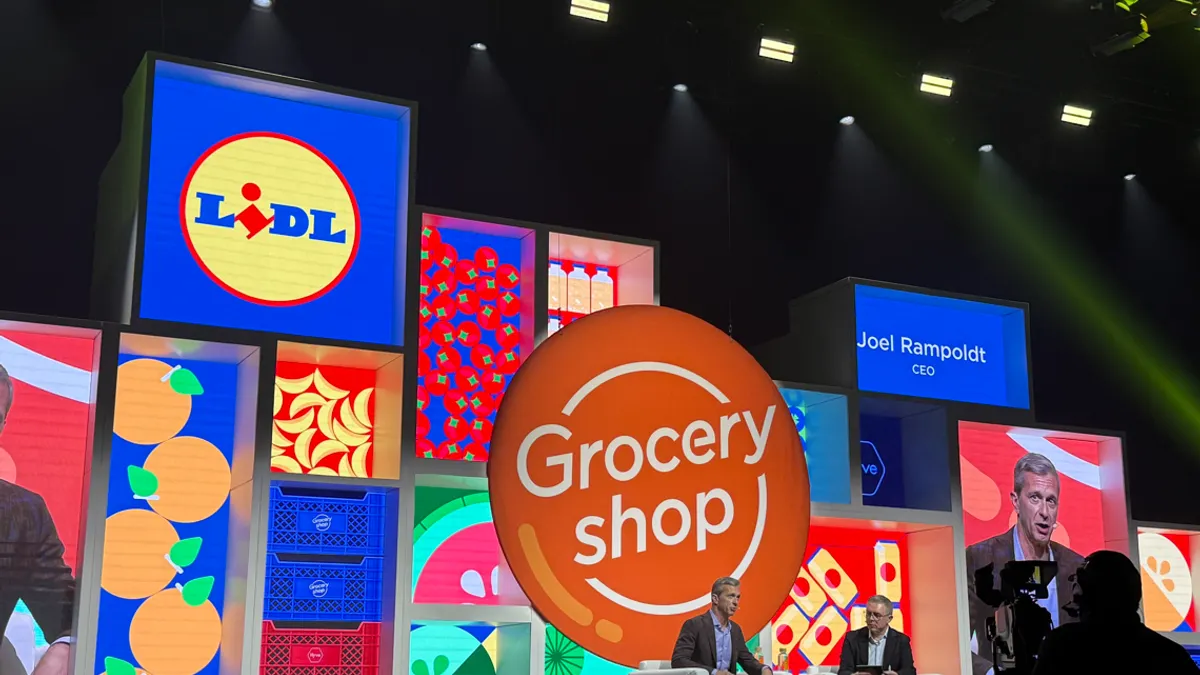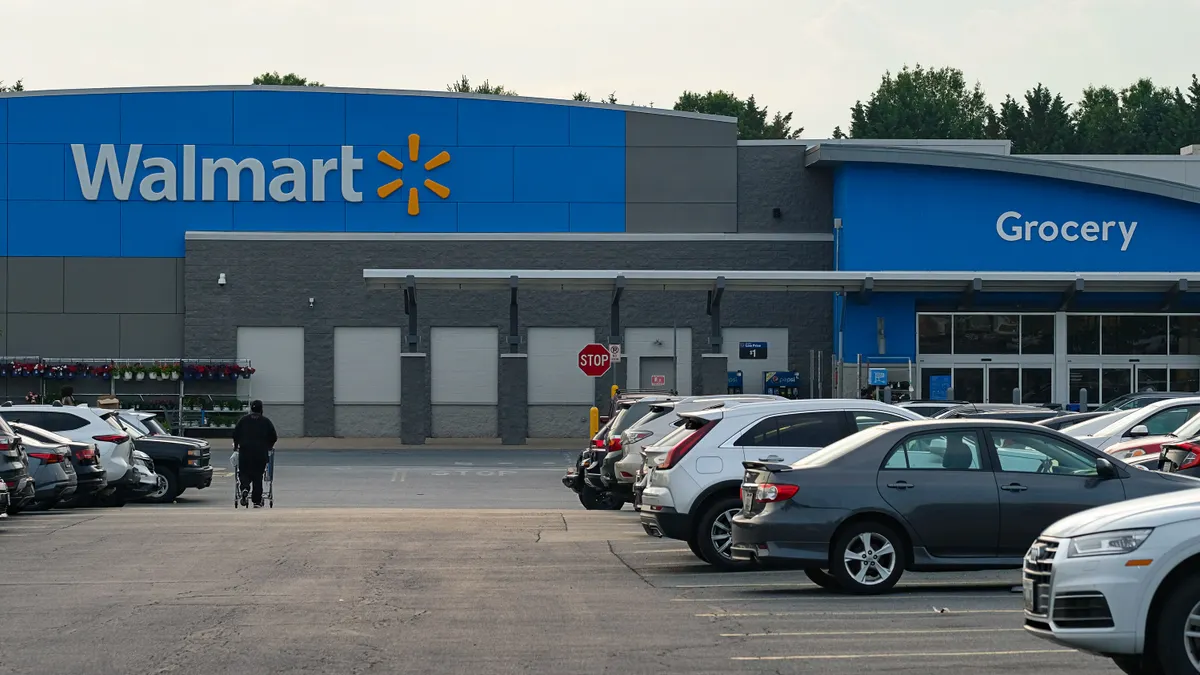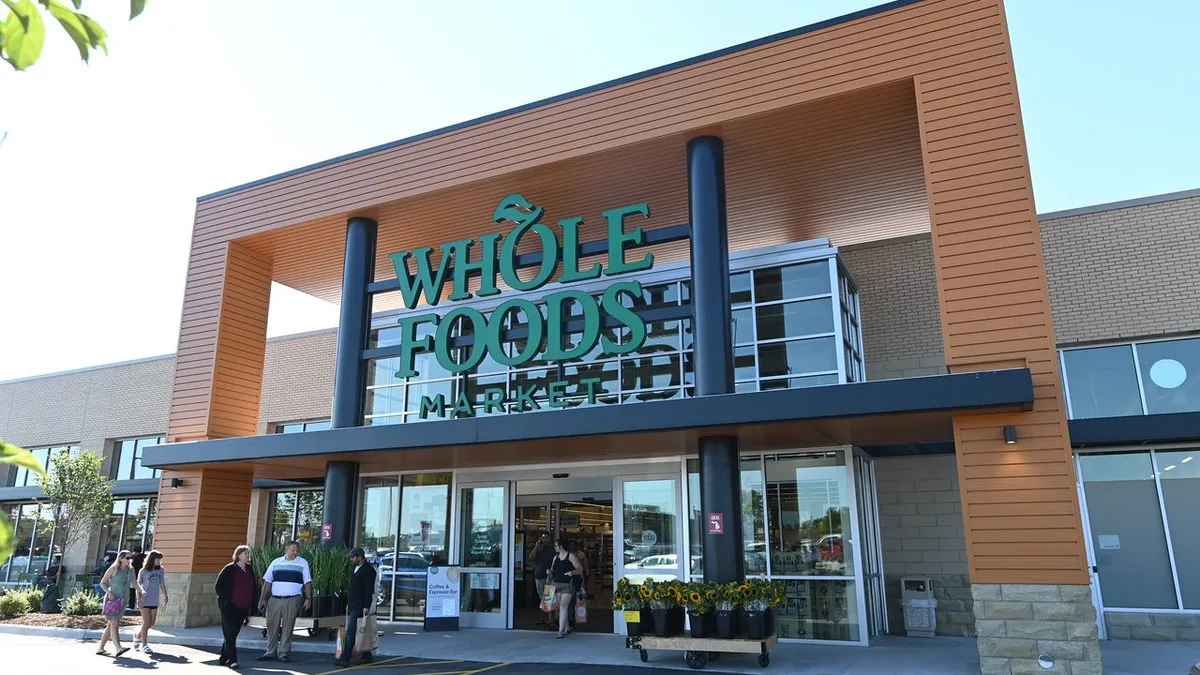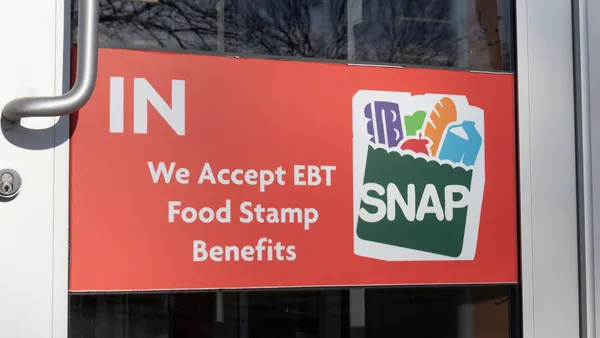LAS VEGAS — Lidl U.S. isn’t done with its penny-pinching efforts as it looks to strengthen its presence stateside.
Since Joel Rampoldt stepped into the CEO position at Lidl U.S. in 2023, the German discount grocer has trimmed its core assortment from about 4,500 SKUs to about 3,250, Rampoldt said during a Monday keynote at Groceryshop. Lidl also recently rolled out electronic shelf labels to all of its stores in this country, Rampoldt said.
Still, Lidl U.S. has more to do on the efficiency front. The grocer is going digital with planning in its fresh bakery category to understand how much the grocer sells and then tell employees how much product to make and when, he said.
Lidl’s zeal for efficiency runs across the company. Lidl encourages workers to make suggestions for how to improve processes, and its leadership team is always searching for opportunities to cut costs.
“We [are] constantly looking at the business saying, ‘What is more complicated than it needs to be? What can we simplify? Where can we take a minute out of the process?’” Rampoldt said.
While Lidl U.S. is focused on finding ways to run its business more efficiently, the retailer doesn’t stress over details it doesn’t see as a priority, Rampoldt said.
“We talk a lot inside our company about the first 90 feet [and] the last 90 seconds … We want those areas of the store to be in great shape, in stock, clean, looking attractive at all times. And if the other aisles, the cans and boxes are a little bit less perfectly arranged, that’s fine by us,” Rampoldt said.
The discounter also taps into its global roots to streamline its operating model.
“Our motto is ‘As global as possible, as local as necessary,’” Rampoldt said. “As much as possible, we want to operate in a system that we know works [and] that's successful in dozens of countries all over Europe,” such as consistent ways for baking pastries in its bakeries and moving goods from distribution centers to stores.
Lidl U.S. also benefits from technology deployments and innovations that stem from its parent company, Schwarz Group, such as serving as one of the main testing grounds for advanced hardware for self-checkout, he noted.
Nailing efficiency before a growth spurt
Lidl’s heavy focus on operational efficiency impacts its growth trajectory in the United States, where the discounter runs just shy of 200 locations along the East Coast. Rampoldt said that when he joined the company, its leadership team decided the stores were too spread out across the country to build local density and scale.
“You need to have a distribution center that’s serving a lot of stores, that’s running at capacity,” he said. “That is what is really working. It feels like it’s about to burst and you can’t do that if your stores are too spread out.”
Competitor Aldi has aggressively zipped along with opening stores in new and existing markets across the U.S.. Meanwhile, Lidl is focusing on building density in “markets where we already have a good foothold,” Rampoldt said.
Lidl U.S. is set to open four stores in October and has plans for store openings for the next 10 years, Rampoldt said. Last year, the grocer relaunched its brand stateside.
“We’re growing at what I would consider to be a modest pace for now, because we want to make sure that the business is stable and … [that] we have our operations and our commercial offering really locked down before we turn up the heat on growth,” he said.














